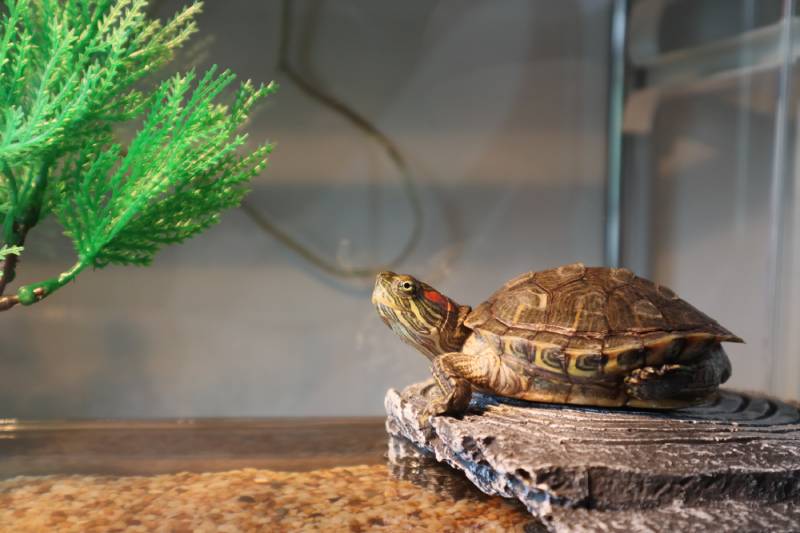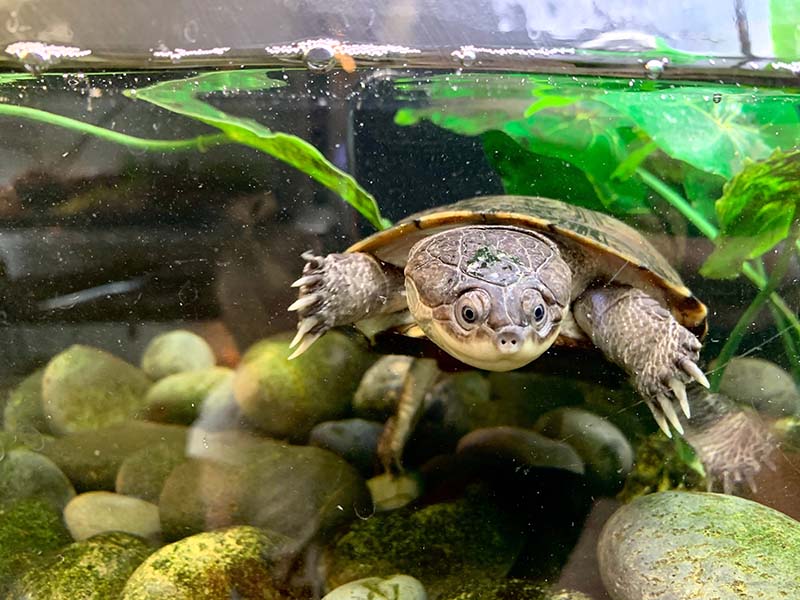Male vs Female Tortoise: Key Differences (With Pictures)

Updated on
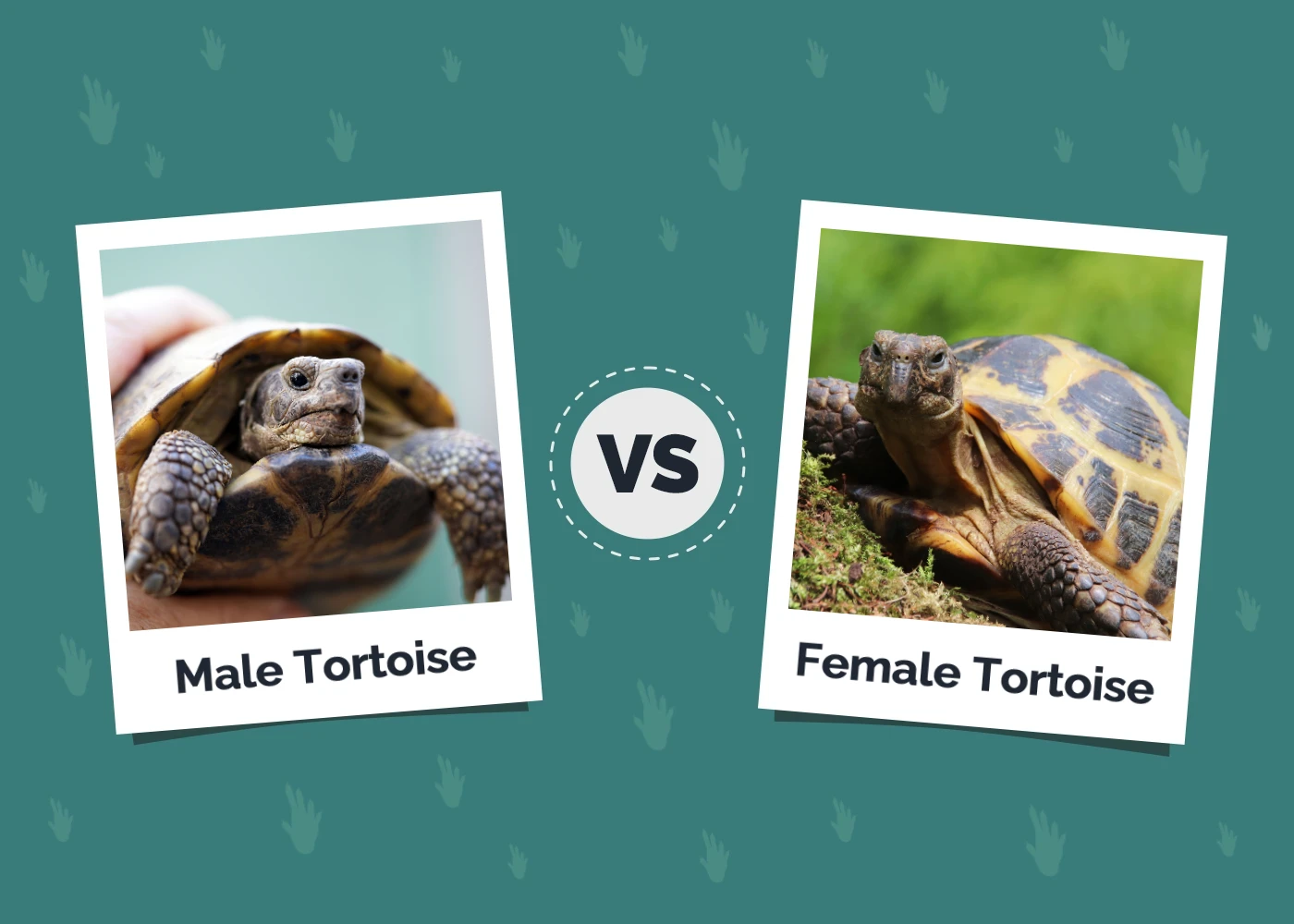
Click to Skip Ahead
If you’re planning on adopting a tortoise, you’re probably wondering: should I go with a boy or a girl? For the most part, male and female tortoises are alike. They have similar traits, like eating the same food, and warm up to their human parents when treated properly. However, males have larger tails and rounder bellies and are a lot more aggressive. Plus, they don’t lay eggs.
At the same time, the ladies have a sweet temper and don’t tend to fight other tortoises, yet they require more care. So, how do you know which sex is best for you? Read on to learn more about the temperament, training requirements, health issues, and pros/cons of male and female tortoises to make the right pick!

Visual Differences
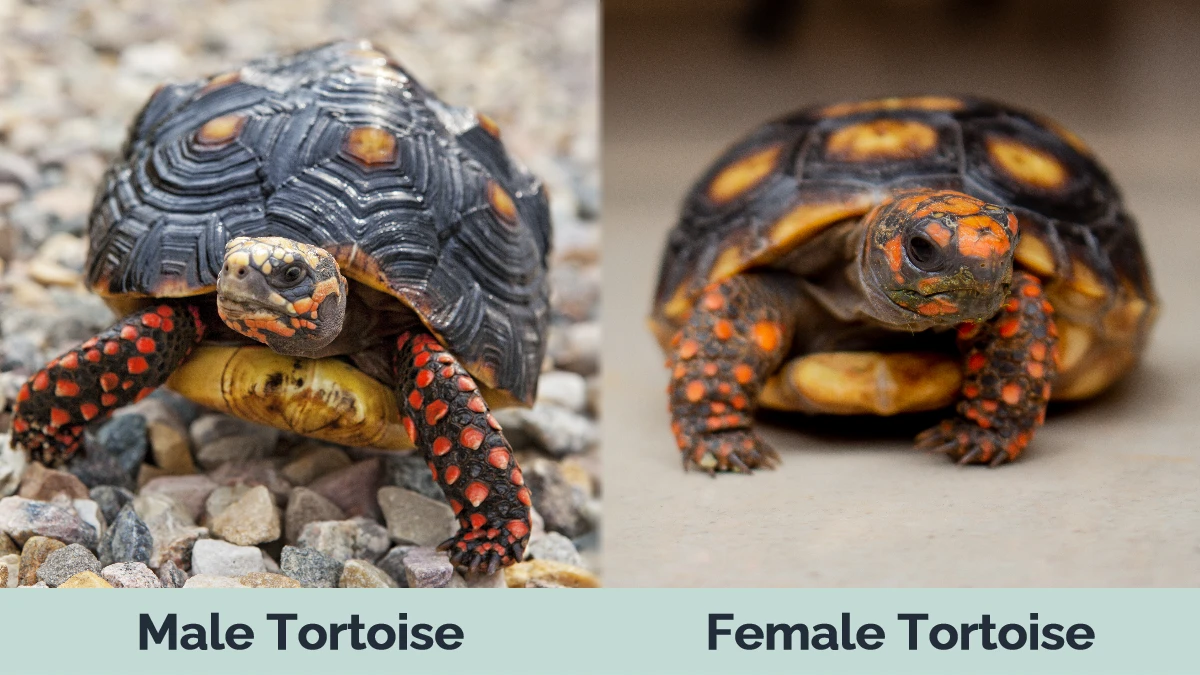
At a Glance
- Average height (adult): 23–27 inches
- Average length (adult): 8–43 inches
- Average weight (adult): 50–180 pounds
- Average lifespan: 50–200 years
- Average height (adult): 25–30 inches
- Average length (adult): 10–45 inches
- Average weight (adult): 60–200 pounds
- Average lifespan: 40–180 years

Tortoises 101
Tortoises are slow-paced, shelled reptiles in the Testudinidae family with an average lifespan of 80–150 years. However, in contrast to turtles, most tortoises prefer to live, hunt, and mate on the land and only occasionally take “dips” in the water. That means you won’t necessarily have to build an aquarium for a domestic tortoise. They’re not the easiest pets to keep, though. But once you master the basics, you’ll get yourself a lifelong new best friend!
Tortoises use their shells to hide from predators and other threats. Males have a V-shape shell notch and rounder stomachs. As for the size, it varies greatly depending on the species. These fascinating reptiles can be as tiny as 2–3 inches and 1–2 pounds or as gigantic as 40–45 inches and 180–200 pounds. Also, male tortoises aren’t bigger than females. This is true for the Russian, Hermann’s, and Star tortoises, but doesn’t apply to the Sulcata/African species.
Oh, and males always have slightly bigger tales; the same is true for the nails. No matter the breed, these creatures are placid and slow-moving. The average speed of a tortoise is 0.12–0.31 mph (0.2–0.5 km/h). Thankfully, their shells allow tortoises to weather the storm and stay alive. To keep it sturdy, remember to feed your slowpoke bud a proper diet that includes a generous amount of leafy greens plus some vegetables and fruit for calcium. This is true for both males and females.

Male Tortoise Overview
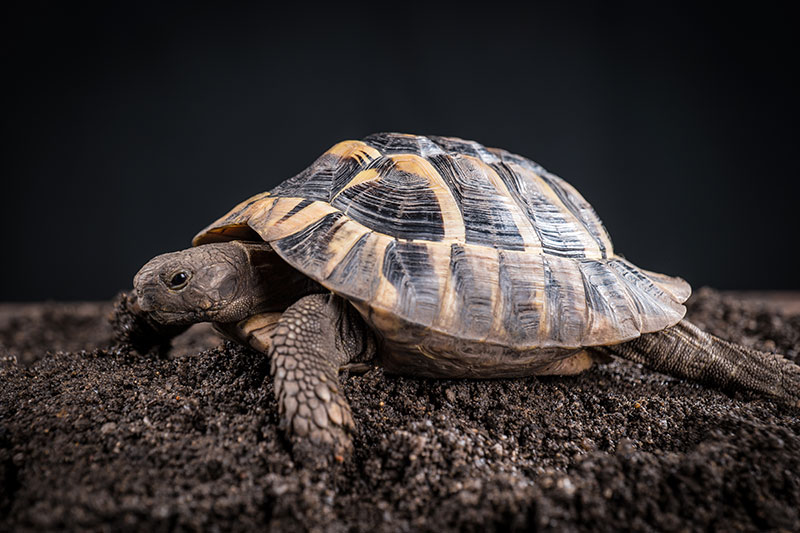
Personality / Character
Just like humans, every single tortoise is different. But, for the most part, males tend to be more territorial and aggressive against each other. It’s not rare for them to hurt each other during the mating season to win over females. But this can be avoided if you put them in different areas. And one more thing: most tortoise males like to hump things, including dishes, rocks, and other objects, not to mention flash their “tortoisehood”.
Training
Positive reinforcement plays a key role in training tortoises. More specifically, we’re talking about food. So, if you want the shelled bud to come to you when you call it by name or clap your hands, use food as a motivator. This will take some effort, of course: while tortoises are intelligent creatures, they often need time to learn to recognize your commands. Therefore, be very patient and don’t show any signs of disappointment/frustration.
Instead, take it slow. With patience and a little bit of luck, it shouldn’t be hard to train a tortoise to use the bathroom or follow your lead.
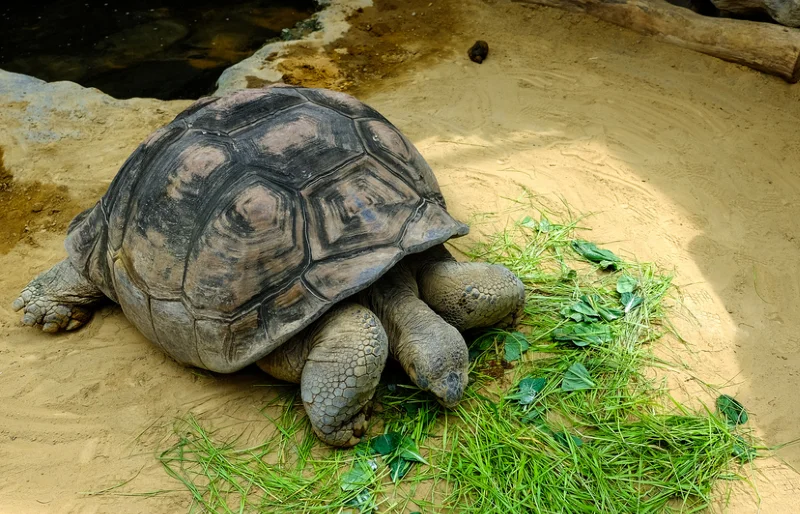
Health & Care
Male tortoises have a slightly longer lifespan compared to females. But they still rely heavily on us, their human parents, for food, shelter, and protection. As for medical issues, tortoises are generally healthy creatures. And the males and females suffer from roughly the same conditions. However, the males are susceptible to penile prolapse.
- Stomatitis
- Parasites
- Infectious diseases
- Pyramidal growth
- Skin/shell issues
- Shell/mouth rot
- Diarrhea/constipation
- Calcium deficiency
Breeding
In the wilderness, male tortoises become sexually active once they turn 20–25 years old. The exact age varies depending on the species, but, if you hear your shelled friend bellowing, best believe he’s trying to attract the attraction of a pretty reptile lady. Other signs include head bobs at the opposite sex and even biting. The female will then hide her head and legs inside her shell, giving the male an opportunity to mount her.
This is important: in captivity, males often reach sexual maturity much faster (at 4–5 years of age). This happens because they live in a near-perfect environment and get 24/7 access to nutritious food. But no matter the living conditions, tortoises mate right after hibernation. This usually happens in early or mid-spring and lasts until July.
- Low-maintenance as pets
- Have a longer lifespan
- Tend to get aggressive/territorial
- Like to hump things

Female Tortoise Overview
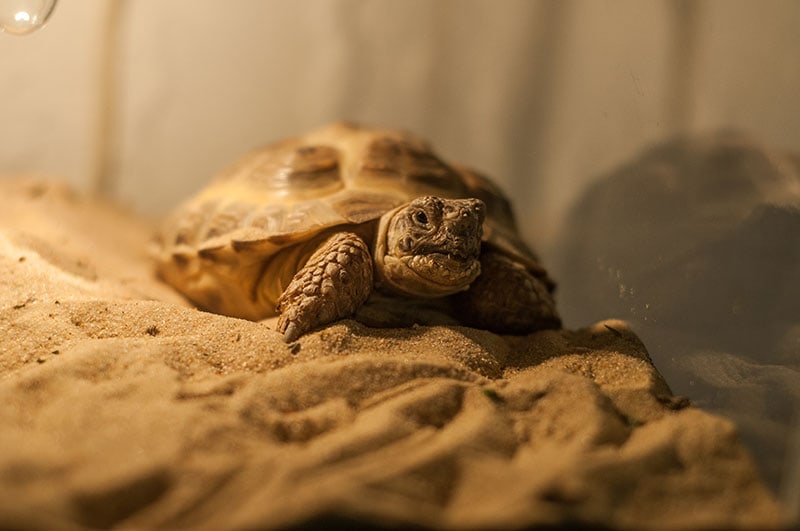
Personality / Character
When compared to males, female tortoises are not as vigorous or rowdy. Instead, they have a more welcoming personality and get along with other pets and fellow tortoises. This doesn’t mean there won’t be any conflicts between two females, of course, but the chances are much lower. More importantly, when they’re about to lay eggs, ladies might get a bit anxious and stressed and require extra care.
Training
You won’t have to come up with an entirely different training routine if you adopt a female tortoise vs. a male. Just like dogs and cats, these creatures respond roughly the same to human commands. So, the personality/temperament of the reptile will have a much bigger impact on its ability to learn new tricks than its sex. Again, it’s all about creating a positive association with a specific action.
For example, using food as a reward for completing simple tasks is a highly effective technique, regardless of whether the tortoise is a boy or a girl. That said, thanks to a milder, friendlier personality, female tortoises are sometimes a bit easier to train. They don’t get territorial or aggressive, either.
Health & Care
There aren’t any significant differences when it comes to health conditions between males and females. The ladies are just as prone to parasite infections, mouth rot, and stomach problems, to name a few. But they do suffer from dystocia when unable to lay their eggs. This is a rather common issue. So, make sure to feed them the right food and talk to a veterinarian regarding any supplements (especially calcium) to help the tortoise out.
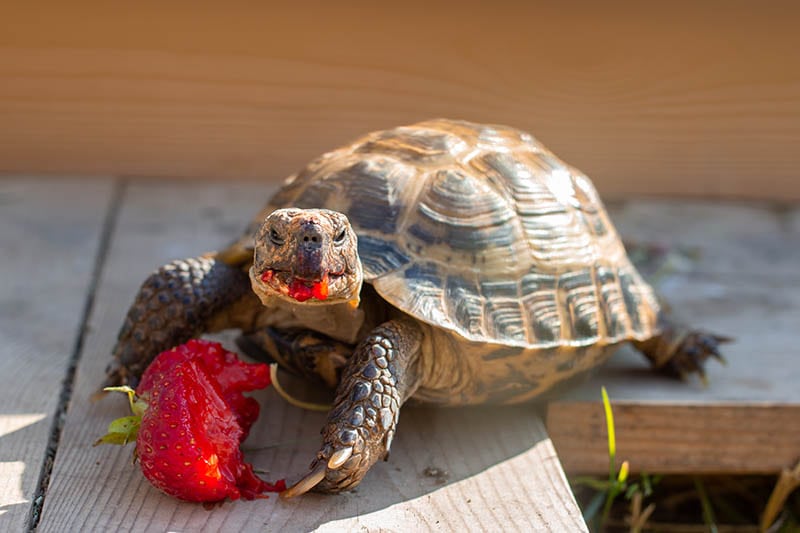
Breeding
If you put both a male and a female tortoise in the same enclosure, before long, they will start to mate. We’re talking about early spring, right after the reptiles wake up from a long sleep. This is interesting: females need males for fertilization. However, that doesn’t mean they won’t lay eggs: that will happen regardless of whether the female had contact with a male, or not. But, the eggs won’t hatch if not fertilized.
Tortoises lay 3–5 times a year, and, on average, you’ll see 4–30 eggs in a single clutch.
- Have a sweet, calm temper
- Somewhat easier to train
- Lay lots of eggs (up to 30)
- Egg laying can be stressful

Which Gender Is Right for You?
Summing up, if you’re looking for a low-maintenance pet, a male tortoise will be the better pick. They live longer and don’t lay eggs or get stressed about it. That said, if you want to keep two male shelled buds in the same house, make sure they have separate enclosures. Male tortoises tend to be quite hostile toward each other, especially during the mating season. Besides, they often flash and hump things.
In this regard, the “girls” are a more preferred pick, simply because they’re a lot friendlier and open toward strangers and fellow reptiles. Plus, if you only keep a female in the house and don’t let any males around her, the tortoise won’t produce any babies (although it will lay eggs). So, ultimately, it all comes down to your preferences and fondness for either gender!
See Also:
- Male vs Female Turtle: The Main Differences (with Pictures)
- How Fast Can a Tortoise Run? Speed Comparison & FAQ
Featured Image Credit: Left – Karen Dole, Shutterstock | Right – Haoss, Shutterstock
